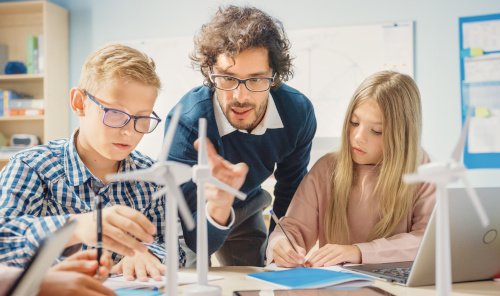
4 tips to bring the real world into your classroom
Real-world examples bring something more tangible, impactful, and real to the curriculum--and students become more interested and engaged
By Abbas Manjee, Co-Founder and CAO, Kiddom August 10th, 2022Too often, the focus of education is not the actual use of knowledge and material but rather a memorize and repeat model.
It is an archaic formula that stems from a time when students were required to simply sit and listen–and it is poor preparation for the modern world. Today’s students need to be exposed to working environments that foster collaboration, communication, and community. Higher education and the workforce do this well. However, schools and teachers need to foster that same collaboration in K-12 education to better prepare students for their futures.
One way to do this is for educators to incorporate real-world examples into their teaching. Real-world examples bring something more tangible, impactful, and real to the curriculum, and students become more interested and engaged when they see how their lessons apply to their daily lives. They also promote a more critical and holistic way of thinking. After all, life is often more complex than what is presented in the classroom.
How do you bring the real world to the classroom? Here are four tips:
1. Incorporate current events into lessons as real-world examples. By using current events, students build connections between the real world and the classroom and increase their awareness of cultural, social, and political perspectives they may not otherwise be exposed to.
2. Employ case studies to bring ideas to life. Case studies are an excellent way to illustrate not only how the curriculum is employed outside the classroom, but also to demonstrate decision-making, implications, and impacts.
3. Prepare students for modern-day work by incorporating technology and multimedia into the classroom. A platform like Kiddom puts everything a student needs – assignments, grades, ways to communicate with their teacher – in one place, empowering them with the right tools and skills to manage their own learning and improve outcomes. Educators can also encourage students to use devices to explore topics more deeply, find relevant ideas, and further their own understanding.
4. Encourage collaboration through group work. Studies show that students who work collaboratively with new information preserve and understand it better than when they use it in an individual setting.
About the Author:Abbas Manjee is the Co-Founder and CAO of Kiddom. Abbas is a member of the core founding team at Kiddom. Before Kiddom, Abbas taught high school math serving at-risk youth in New York City. He was a founding math teacher and department chair at two alternative high schools.